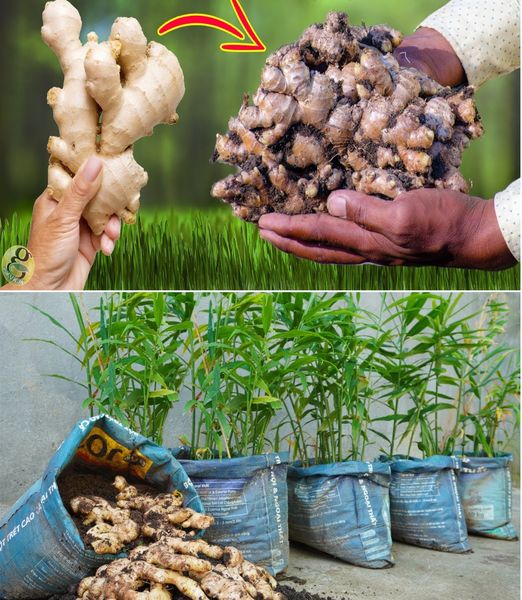
Ginger (Zingiber officinale) is an aromatic and spicy root widely used in both culinary dishes and traditional medicine. Cultivating it at home can be a rewarding experience, leading to the production of high-quality, fresh ginger.
In this guide, we’ll explore the necessary steps to successfully grow ginger at home and even encourage it to bloom.
- Preparation: Before starting your ginger cultivation, ensure you have everything you need:
- Ginger Roots for Planting: Purchase fresh and high-quality ginger roots from the market or grocery store. Look for fleshy roots without dryness, with well-developed buds.
- Appropriate Pot: Choose a pot or container large enough to accommodate ginger roots with good drainage. A thickness of at least 25-30 cm is recommended to allow the roots to grow freely.
- High-Quality Soil: Use well-draining soil enriched with organic matter. You can mix garden soil with compost or potting mix.
- Location: Select a spot that receives indirect or filtered light. Ginger thrives in warm and humid climates, so try to create a similar environment.
How to Grow Ginger:
Preparing the Roots:
- Cut ginger roots into pieces of about 5-7 cm, ensuring each piece has at least one bud.
Germination:
- Fill the pot with the prepared soil.
- Plant the ginger root pieces about 2-3 cm deep, with buds facing upward.
- Water the soil gently to keep it moist but not waterlogged.
Plant Care:
- Place the pot in an area with indirect light and a constant temperature around 20-25°C.
- Keep the soil moist but not overly wet. Excess water can lead to root rot.
- After a few weeks, you should start to see sprouts emerging.
Transplanting:
- When the plants have grown enough (usually after 2-3 months), you can transplant them into a larger pot or into the garden if weather conditions permit.
- Ensure a spacing of at least 15-20 cm between each plant.
Ongoing Care:
- Water regularly, keeping the soil moist but not waterlogged.
- Fertilize monthly with a balanced fertilizer.
Pruning:
- Trim wilted or damaged leaves to promote the growth of new leaves.
- Encouraging Ginger to Bloom:

Achieving ginger flowering requires patience and extra attention. Follow these steps to increase the chances of flowering:
Plant Maturity:
- Allow ginger plants to grow and mature for at least 8-10 months. Flowering usually occurs in more mature plants.
Reduced Care:
- Gradually reduce watering and fertilization to “induce” the plant to enter a dormant state.
Simulating Seasonal Change:
- If growing ginger indoors, simulate a change of season by exposing the plants to slightly cooler temperatures (15-18°C) for several weeks.
Waiting and Observation:
- Flowering may take time and is not guaranteed. Continue monitoring your plants and look for signs of flowering, such as the emergence of long stems with flower buds.
Care During Flowering:
- Provide tender care during flowering, ensuring the plants receive enough indirect light and humidity.
Cultivating ginger at home can be an exciting and rewarding challenge. From germination to flowering, each stage requires attention and care. Remember that ginger flowering can be unpredictable and not always guaranteed, but with the right care and patience, you may be fortunate enough to enjoy the wonderful ginger flowers in your home.




















